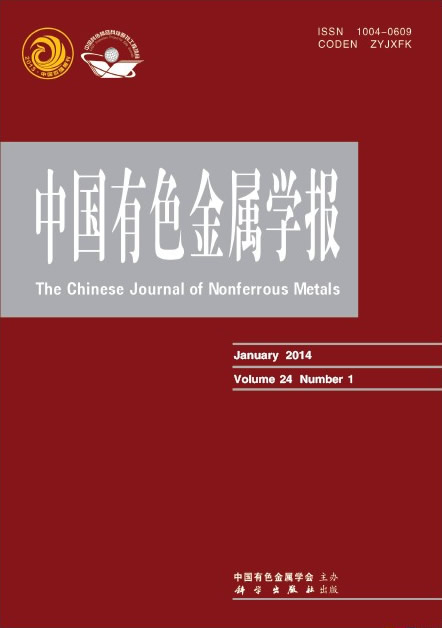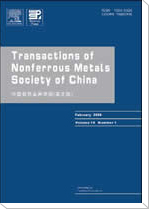(1. 沈阳化工学院 材料科学与工程学院,沈阳 110142;
2. 沈阳大学 材料科学与工程系,沈阳 110044;
3. 中国科学院 金属研究所 沈阳材料科学国家(联合)实验室,沈阳 110016)
摘 要: 采用反相微乳液法制备(Y,Gd)2O3׃Eu3+纳米粉体。通过XRD、TG/DSC、SEM、TEM、PL等手段分别对样品的晶化过程、晶粒尺寸、粉体形貌以及发光性能进行分析。结果表明:晶粒尺寸随着晶化温度提高而增加,样品在
关键字: 反相微乳液;(Y,Gd)2O3׃Eu3+纳米粒子;发光性能;浓度猝灭
(1. School of Materials Science and Engineering, Shenyang Institute of Chemical Technology, Shenyang 110142, China;
2. Department of Materials Science and Engineering, Shenyang University, Shenyang 110044, China;
3. Shenyang National Laboratory for Materials Science, Institute of Metal Research, Chinese Academy of Sciences, Shenyang 110016, China)
Abstract:(Y,Gd)2O3׃Eu3+ nanoparticles were prepared by reverse microemulsion method. The crystallization process, grain size, morphology and photoluminescence properties of the sample were characterized by XRD, TG/DSC, SEM, TEM and PL. The results show that the grain size increases with increasing crystallization temperature and the complete crystallization temperature of the precursor is 800 ℃. The particles are near-spherical with the primary size of 20 nm when the initiate concentration is 0.37 mol/L. The excitation spectra of (Y,Gd)2O3׃Eu3+ is observed by monitoring at 612 nm, and there is a wide band which is due to the charge transfer band (CTB) of Eu3+-O2−. The characteristic peak of (Y,Gd)2O3׃Eu3+ locates at 612 nm which is caused by 5D0-7F2 transition of Eu3+ excited by 237 nm. When the atomic content of Eu is above 10%, the concentration quenching occurs and it leads to the intensity decreasing of the characteristic peak.
Key words: reverse microemulsion; (Y,Gd)2O3׃Eu3+ nanoparticles; photoluminescence properties; concentration quenching


